The most spacious, open and decadent site in Kyoto – and you can take an English tour of it for free…
Kyoto Gosho (京都御所) was the Imperial Palace of Japan before the capital was moved to Tokyo in 1869. The buildings have been preserved since 1877 and are contained in a walled area of the Kyoto Imperial Park (京都御苑 / Kyoto Gyoen) in the center of Kyoto.
This article won’t talk much about it’s history – you can find plenty on that topic on many other sites – instead it shows a lot of pictures from inside the palace grounds, as well as explain how to get the free English speaking tour.
Pictures of the Kyoto Imperial Palace
… and a look at the free English tour.
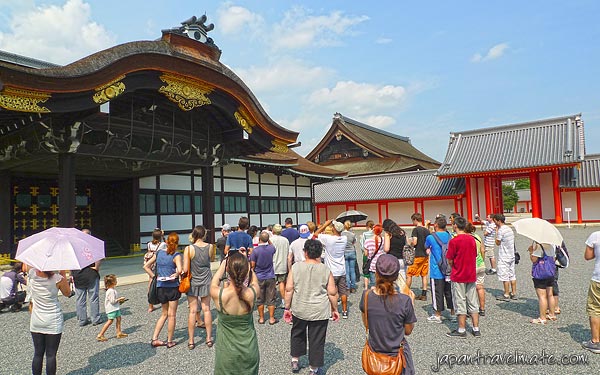
In the middle of Kyoto (map at the end of this article), the Palace lies inside the Kyoto Gyoen National Garden. The entire garden (except for the Palace grounds) is freely open to the public, and it’s a nice place to bring a lunch and relax.
The garden surrounds have a rich history, during the Meiji Era it was a small town of about 200 houses for court nobles who would frequent the Palace. The remains of 9 outer gates surrounding the garden can still be seen, however most of the houses were removed and turned into the garden you can see today.
The garden itself is surrounded by a large wall, which once had 9 gates. Inside the garden, before you get to see inside the Palace grounds, you can’t help but notice the length of the inner walls that surround the Palace.
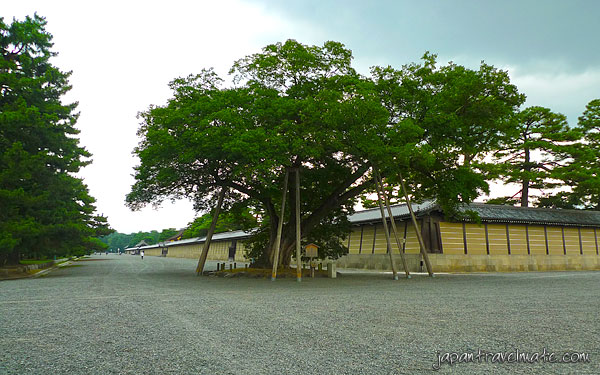
This is a muku tree and in the background is the wall of the Palace. The tree is highly respected in these grounds. At 300 years old, it is one of the few big and old muku trees here. It became notable after a legendary samurai, leading a radical “rever the Emperor and expel the barbarians” group, died beside the tree in 1864.
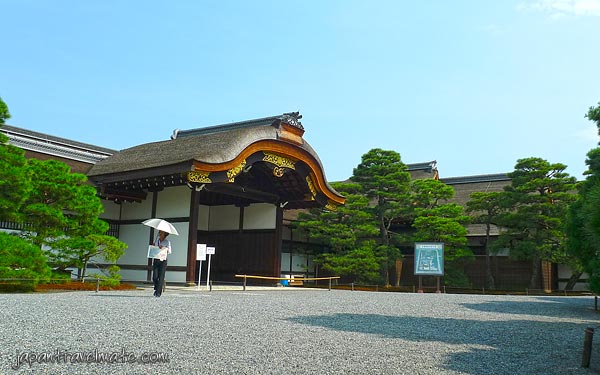
After booking in for the free tour (details at the end of this post on how to do this) and gathering in the waiting room prior to the tour, we set off (on a very hot day during Japan’s summer) for what was a 90 minute tour.
The guide, a Japanese lady, spoke excellent English. The fact that the Kyoto Imperial Palace is property of the Emperor and hence the goverment, I guess, ensures you get a quality guide!
I’ve been on plenty of other English speaking tours where the guide speaks barely legible English, sounding as if they just memorised a script – and they don’t have the ability to understand or answer any questions.
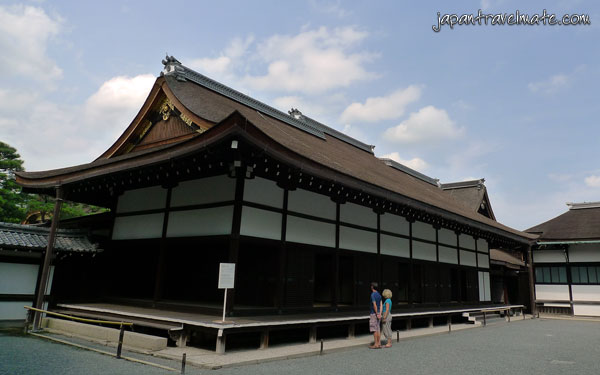
The tour shows you many different buildings and the guide explains the uses and history of these places. This waiting hall, near one of the main gates, was the first to show us the amazingly decorated interior walls. Of course, you can’t go inside these rooms but you get a great view of what’s inside.
Below is just a few (and the first) of many such paintings seen.

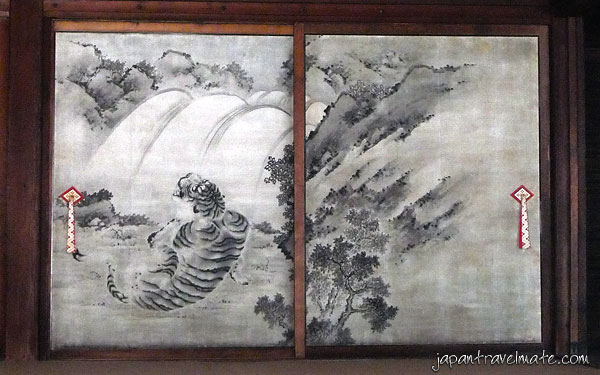
The style of many of the buildings – mostly the white walls – reminds me of historic Kurashiki in Okayama. The buildings here and the area in Kurashiki are preserved from the same era.
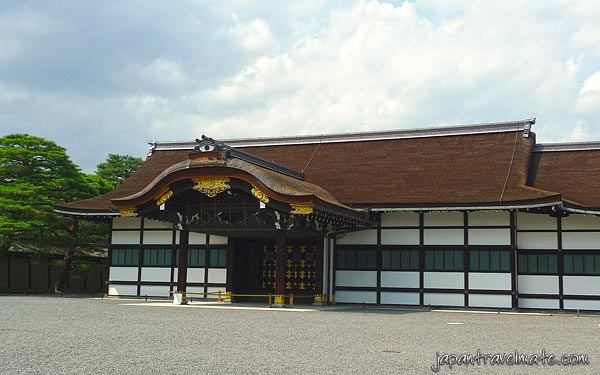
One of the great things about this place is the ability to experience it without the masses of tourists at every other site in Kyoto. There was about 40 people in our tour group, which means if you hang back or go ahead a little, you can get some great photos and really experience the expanse of this splendid Palace.

Every building and area of the Palace has a specific purpose. The picture below is looking across the forecourt at the most important building in the Palace. The gravel forecourt played an important role in ceremonies – as did a few other buildings in the Palace.
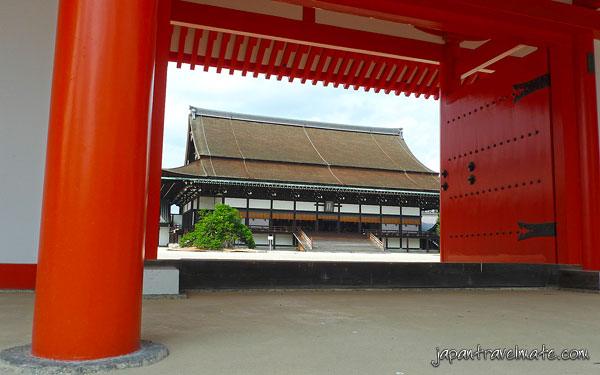
Not only is this the most important ceremonial building – of which there are many – it is easily the biggest single building in the Kyoto Gosho. This ceremonial hall, and the entire area in general, was where enthorment ceremonies for past emperors took place.
The gravel garden contains a cherry blossom tree (to the right of the hall) and in view in the photo above you can see an orange tree which all played important parts in ceremony.
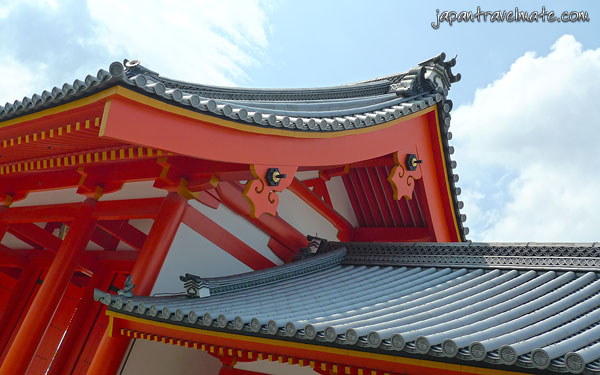
These walls and many other structures are well maintained. The detail is amazing. You can click the image above to see it in higher resolution and more detail. At the end of each row of roof tiles is the Emperor’s seal.
Random fact: the guide explained that most people think the red colour of the painted gates and pylons are the same as those seen in China. However Japan’s gates and temples are generally a more orange colour.
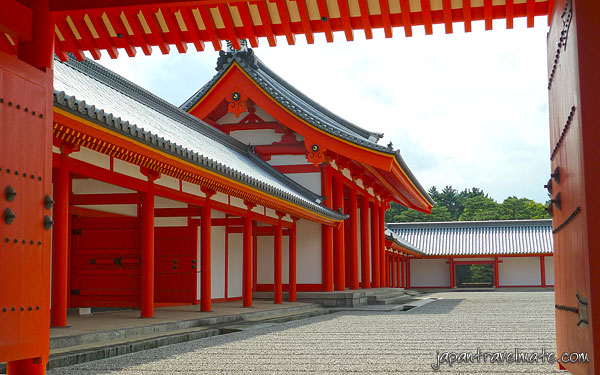
Turning around from the ceremonial hall is a huge and open area. This is the south area of Palace grounds.
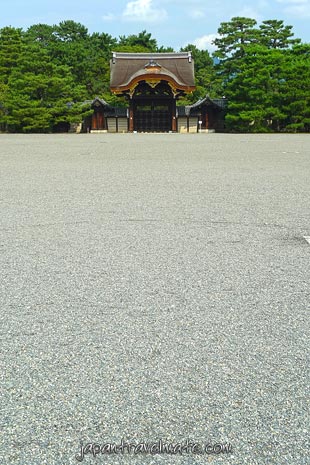
During this tour I learnt one of the reasons why so many amazing buildings have burnt down in Japan. Of course they were made mostly of wood, but the the roofing was made from a thatching of matchstick size pieces of wood. Crammed together these were great kindling with plenty of air space to help a fire along.
In maintaing the Kyoto Imperial Palace’s building, workers use traditional techniques when restoring the roof.
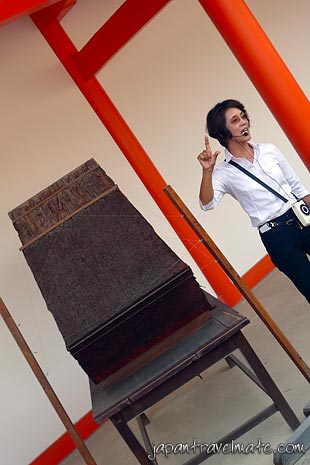
This detached building has an interesting purpose. It was built to place a sacred mirror in for the enthronement ceremony of Emperor Taisho in 1915. That’s all it does, houses a mirror, and doesn’t get much use at all.
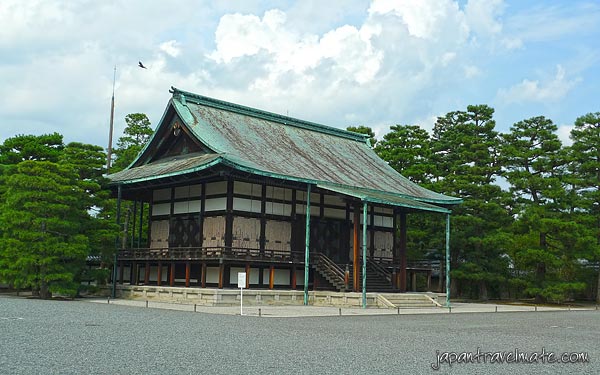
On the east side of the Palace grounds is a man made lake and some green gardens. These are opposite some residential rooms and other types of meeting halls. They were used for recreation by the Emperor and his family.
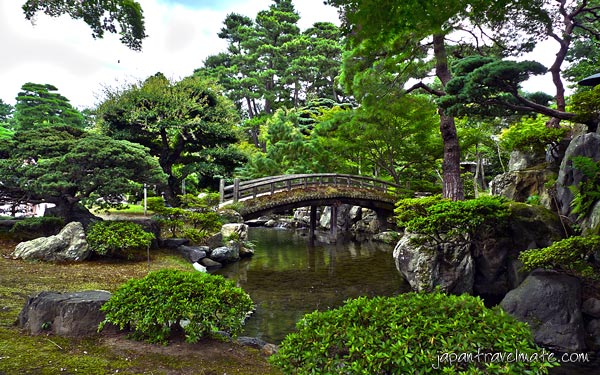
We visited the Kyoto Gosho in the middle of summer. In autumn and spring the gardens would come to life even more, with cherry blossoms or the changing colour of the dieing leaves.
How to Book a Free Kyoto Gosho Guided English Tour
You have to book in for the tour of the Palace before you can enter, but you can do it on the same day. English guided tours take place at 10am and 2pm.
Take your passport to the Imperial Household Agency Office, which is in the west side of the garden – directly opposite the north-west corner of the Palace walls. It’s very easy to find once you get to the garden, there are plenty of maps.
The people in the office have good enough English to book you in for a tour that day. All you need to do is fill out a simple form and show them your passport.
I had enough time to go first to Kinkaku-ji (Golden Pavilion temple) in the morning, then into the office to book in the 2pm tour, then go to the nearby Nijo Castle, have lunch and return at about 1:45pm to gather for the Kyoto Gosho tour.
Annual Spring Open Days 2015
For a few days in April, the palace grounds are open to the public with no need to book in advanced. This is a great time to see the sakura in bloom in Kyoto, and get up close to some buildings which are usually closed to the public.
UPDATED:
The Kyoto Imperial Palace Spring Open Days 2016 are held April 6 – 10 from 9am – 3:30pm.
How to get to the Kyoto Imperial Palace
The Palace is in the middle of Kyoto, very close to Nijo Castle.
The best way to get there is by bus. I’m a big advocate of the all-day city bus pass (I’m about to do an entire blog post on it actually). You can get it from most hotel receptions, or from around Kyoto station. It costs 500 yen for the day – a one way trip anywhere is a flat fee of 200 yen. I usually get this pass first thing in the morning.
However on the day that I visited the Kyoto Imperial Palace I was getting around Kyoto on a bicycle. The bike hire shop was right near the Golden Pavilion (kinkaku-ji) and was a very easy downhill ride from there.

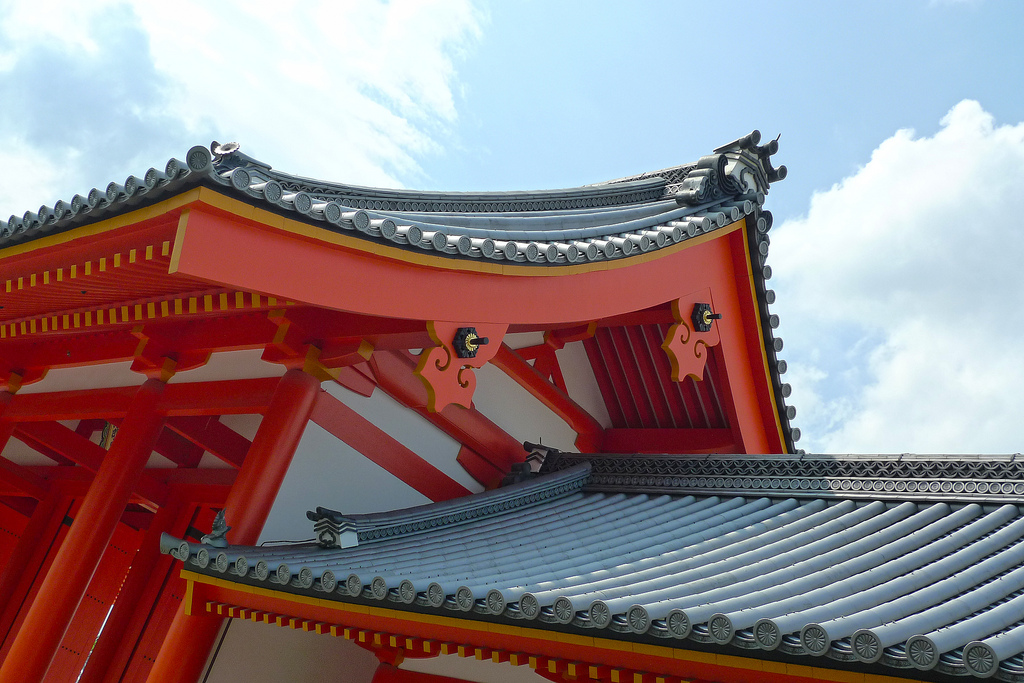
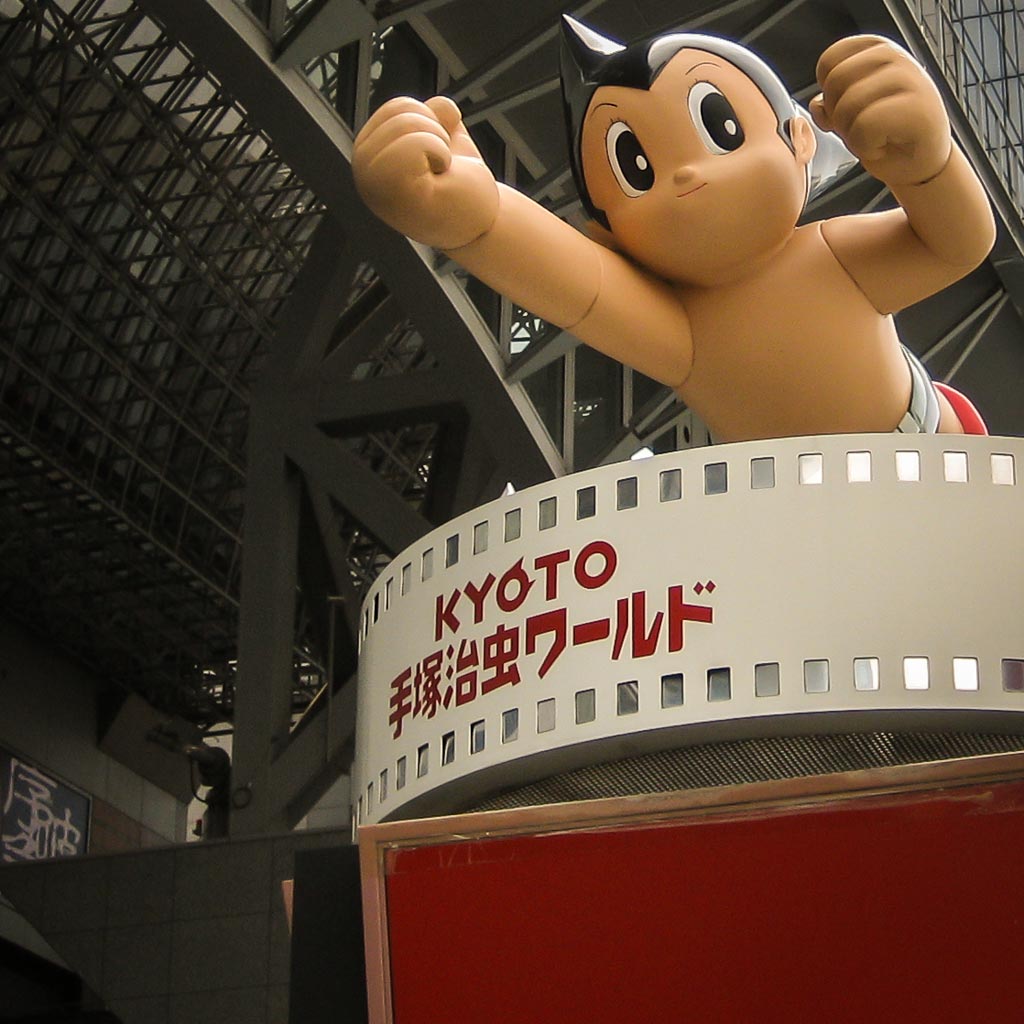
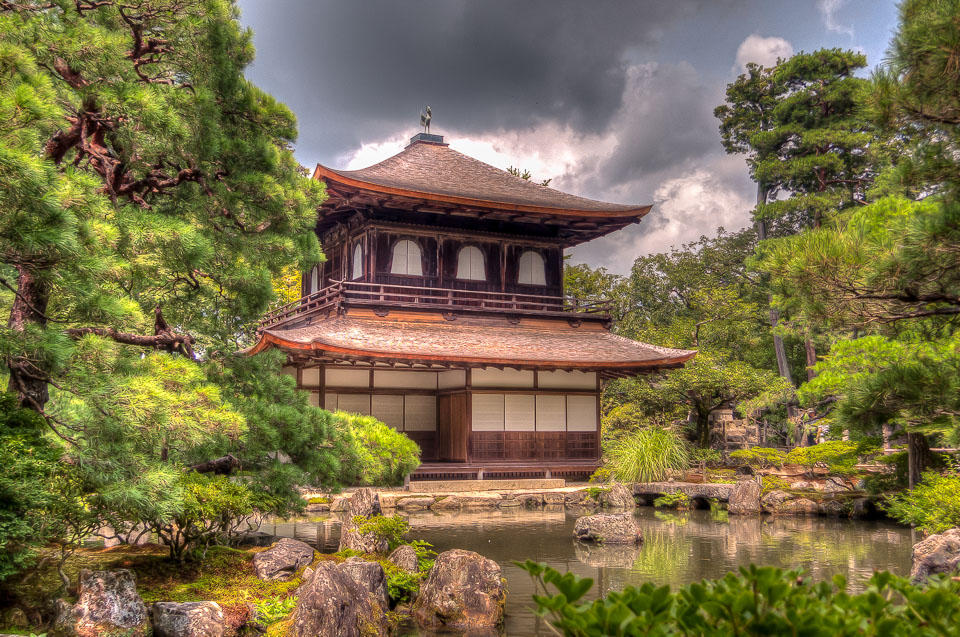
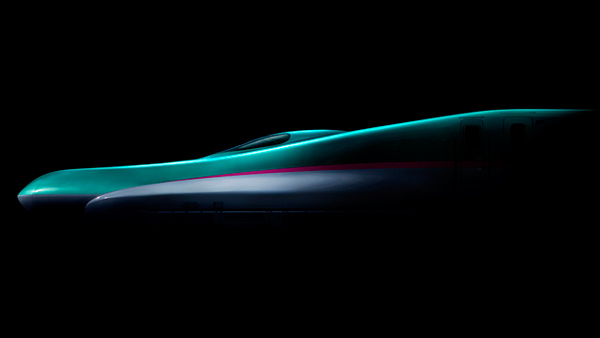
Some great pictures and helpful information about Kyoto Gosho. This is one place I’ve yet to visit in Kyoto and I like the idea of the free English guide as well. I bet the gardens would be magnificent in spring and autumn.
Kyoto Gosho seems the most beautiful part of the world especially the bridge area is magnificence.
Appreciated. Great post with quality pictures. Its hard to find quality blogs about Japan. I also invite you in Pakistan. Bravo. Keep it up.
Hi! Thank you for this great site and for keeping it up to date! I’m flying to Japan in like 8 hours and I so can’t wait that I’m going over various sites to see how well I’ve planned my journey. I’ll be in Kyoto 6-11 of April – and i’m so happy to find an information about the castle’s open days! That’s really great! Ahh.. a few more hours to wait 🙂
Great to hear Izabela, have fun in Japan! Thanks for the kind words about japantravelmate.com!